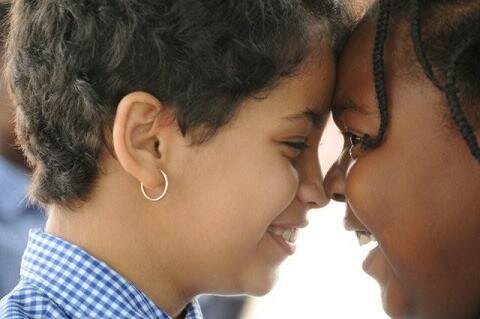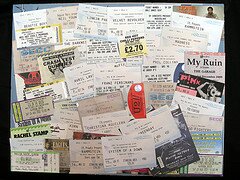family
Family Community Volunteering
Posted April 19th, 2012 by Gena RotsteinGuest blogger – Karine Aviv
A couple of Sundays ago, I took my two older girls (ages 8 and 11) to a community volunteering event (J-Serve), at our local Jewish Centre. As a mother of 3, I believe that getting my kids involved in community events is important for a number of reasons. As they grow and develop, being involved in a larger community teaches them about social responsibility. As a parent, I want them to learn not to focus only on themselves but rather to learn that there is a whole world around them. I want my daughters to learn to be giving, considerate and compassionate towards others. Volunteering is important for character building in children. They learn to care for other people and learn that selfless actions feel good.
- Gena Rotstein's blog
- Add new comment
Reflections on Failure
Posted December 15th, 2011 by Gena Rotstein- business
- Carol Tavris
- education
- Elliott Aronson
- failure
- family
- JCI
- JCI Calgary
- learning
- Marshmellow Tower
- Milestone Project
- Mistakes Were Made but Not by Me
- Nortel
- RIM
- Robert Fulghum
- SGAYYC
- TED
- TEDx
- The Logic of Failure
- Tom Wujec
Several weeks ago I presented to Calgary's JCI chapter. My presentation was about failure. I started with a TEDx Video where Tom Wujec presents on how building a marshmellow tower leads to team building and creative problem solving.
Internationally Acclaimed Milestones Project Photo Exhibit Opening at Gallery 213
Posted August 21st, 2009 by Gena RotsteinInstallation celebrating childhood around the world to tell the same story and confirm a universal truth: We are all connected. This connection is where true and believable healing begins.

Read more »
- Gena Rotstein's blog
- Add new comment
Charity Begins At Home
Posted January 10th, 2009 by Anonymous- charity
- Chick Moorman
- family
- giving
- philanthropy
- Thomas Haller

“Mom, we’ve got to have a family meeting. We need to vote. We have to give our charity money to the children. We have to send it right away.”
Those excited words were uttered by eight-year-old Madison Willow, who was moved to action by viewing the tragic outcomes resulting from the recent Asian tsunami. Madison, like millions of people from around the world, had been touched by the suffering, loss, and grief of the survivors she saw on TV. But unlike many of the people who extended heartfelt charity during this special time of extreme need, Madison has experienced a regular pattern of charity in her young life that has helped her view the process of giving as more than a crisis-oriented activity.
A family meeting was indeed called by Madison’s parents following her emotional outburst. It was convened to discuss the family charity jar that sits tucked away in the kitchen, hidden at the rear of the canned vegetable shelf.
“I know it’s not time to decide who gets our charity money, but this is an emergency,” Madison explained to her parents and two younger brothers. No one in the Willow family needed convincing. They had all seen the dramatic television images of leveled homes, overturned cars, and the search for missing persons. They had watched as mothers cried for their dead children, fathers sat in stunned silence, and children wandered aimlessly, looking for evidence of anything familiar. It took less than ten minutes for the Willows to vote to send the forty-seven dollars and fifty-eight cents they had accumulated to the Red Cross to help the survivors of the tsunami.
Robert and Tammy Willow believe that giving is important. They also believe that teaching their children about giving is equally important. That’s why they began the charity jar in the first place. That’s why it occupies an important place in their Sunday night ritual.
Each Sunday night during their family meeting, the Willows distribute allowances to their children. The youngsters are invited to contribute some of their allowance to the charity jar. If or how much they contribute is up to each individual. Robert and Tammy model the importance of giving by adding a portion of their own money each week.
When the contents of the jar exceed one hundred dollars, the family decides together on a charity to receive the money. One winter the Willow family bought gloves and donated them to the Salvation Army. On another occasion, they adopted a whale. In the past three years, they’ve purchased a winter coat as part of the “coats for kids” program, obtained and wore Lance Armstrong cancer bracelets, and made a donation to a local retirement ranch for abused horses.
At this hastily called family summit, the Willows easily reached consensus on what to do with the charity money. But the unanimous decision to send the contents of the charity jar to the Red Cross did not end the learning experience for Madison and her brothers. They helped count the money. They watched as their mother wrote the check. Madison addressed the envelope. One of the boys added the stamp. The other licked the envelope. All went to the post office to place their contribution in the drop box. All prayed together as Mr. Willow asked that the money be used for the greater good of all concerned.
This time the Willows’ charity would be sent halfway around the world to people they would never see. It would be used in places they would never visit. It would affect lives in ways they would never know.
Yet giving has many dimensions, some obvious, some not. The Willow family gave the money for the benefit of others, but in the process they gave themselves a deep sense of satisfaction. They gave other people’s children hope while simultaneously giving their own children lessons in the importance of generosity and charity. They gave others an invitation to open their hearts while giving their children lessons on how to open their own. They helped their children experience first-hand the important concept that giving and receiving are one.
Charity, as demonstrated by the Willows, clearly begins at home.
Thomas Haller and Chick Moorman are the authors of The 10 Commitments: Parenting with Purpose. They also publish a FREE e-mail newsletter for parents and another for educators. Subscribe to them when you visit http://www.thomashaller.com or http://www.chickmoorman.com
Thomas Haller and Chick Moorman are two of the world’s foremost authorities on raising responsible, caring, confident children. For more information about how they can help you or your group meet your parenting needs, visit their websites today.
Article Source: http://EzineArticles.com/?expert=Chick_Moorman
http://EzineArticles.com/?Charity-Begins-at-Home&id=104123
- 's blog
- Add new comment
Decision Makers: How are Charitable Dollars Allocated in Your Family?
Posted May 19th, 2008 by Gena Rotstein- charity
- community
- dollars
- family
- philanthropy
How do you discuss philanthropy and charity in your family? Growing up in mine the act of charity was never really discussed. It was done, but I think there were some opportunities lost in having an open dialogue with my parents around how they donate their money. Don't get me wrong, my family is very generous with their time and their financial resources, it was just never discussed.

One of my earliest childhood memories was putting loose change in what we call a pushke (Yiddish for coin box). Once the box was full we would take it to the community centre where the money would go to one of many Jewish charities.
As I got older, my own personal contributions to community broadened. Supporting organizations' internal capacity is just as important to me as supporting a specific project. As well, recognizing that my cultural community is only one part of a larger picture, my philanthropy is a representation of all the communities that I am actively engaged with. For a complete list of the charities and organizations that I support please click here.
As I have said in pervious posts, it is important to ask questions. Questions of the charity in which you are about to make a financial investment AND questions of you and your family as to how you want to make those donations. In the very first post of this blog I laid out a series of questions you should be asking yourself. Those questions were to get the ball rolling. Below are some more that you might want to ask yourself and your family as you delve deeper in to philanthropic investing.
Your Past:
What was your fist charitable donation? What was your first major donation (a dollar amount that you had to really think about)?
How did your family discuss charity in your house? Was it action based?
What has been your most important charitable investment? When did you make it? What made it important? Was it your most important charitable gift your largest?
How did you make your financial wealth? Has that influenced you in how you contribute back to your community?
Societal Influencers:
As someone who has financial resources, do you think it is your responsibility to support community initiatives?
How do you leverage your charitable dollars with your family, friends and colleagues? Do you?
Is it important to you that your contribution (whether time, money or professional expertise) be recognized publicly?
The Future:
If money were not an object, is there a project or organization you would invest in?
How do you think your charitable contributions are going to change over time? Are you speaking with your children about how you give and learning from them how they are contributing back to society?
For more in-depth questions I suggest you refer to Scott Fithian's book, Values-Based Estate Planning. Or stay tuned - I am sure that future blog postings will add another layer of questions!
- Gena Rotstein's blog
- Add new comment
A Statement of Society - Entertainment Spending Doubles that of Charitable Giving in 2006
Posted May 13th, 2008 by Gena Rotstein- budget
- charity
- community
- family
- philanthropy
- priorities
 Photo Credit: Limowreck666 (flickr)
Photo Credit: Limowreck666 (flickr)
Did you know that in 2006 North American spent over $2,000 per person on entertainment and just over $1,000 per person on charitable activities?
I found this stat staggering. I recently returned from a trip to Ethiopia, where some of the world's poorest of the poor live. People are living on less than $1/day in hovels that we even our homeless would turn their noses up at.
Since returning something that I have been struggling with is the excess waste that we generate just from every day living. I don't mean pollution waste (though that is shocking and can easily be applied to this piece). I mean waste from leftover food that gets thrown out because we don't want to eat day-olds, to clothes that are from last season, to technology that has been outdated before it even leaves the store.
I think there is a need in our communities and society to strike a balance between our needs and our wants. I am not saying don't go to the summer blockbusters. I am just thinking that when our social safety net is being compromised because we are making choices to spend our money on the latest and greatest instead on what makes our communities strong and vibrant.
- Gena Rotstein's blog
- Add new comment



